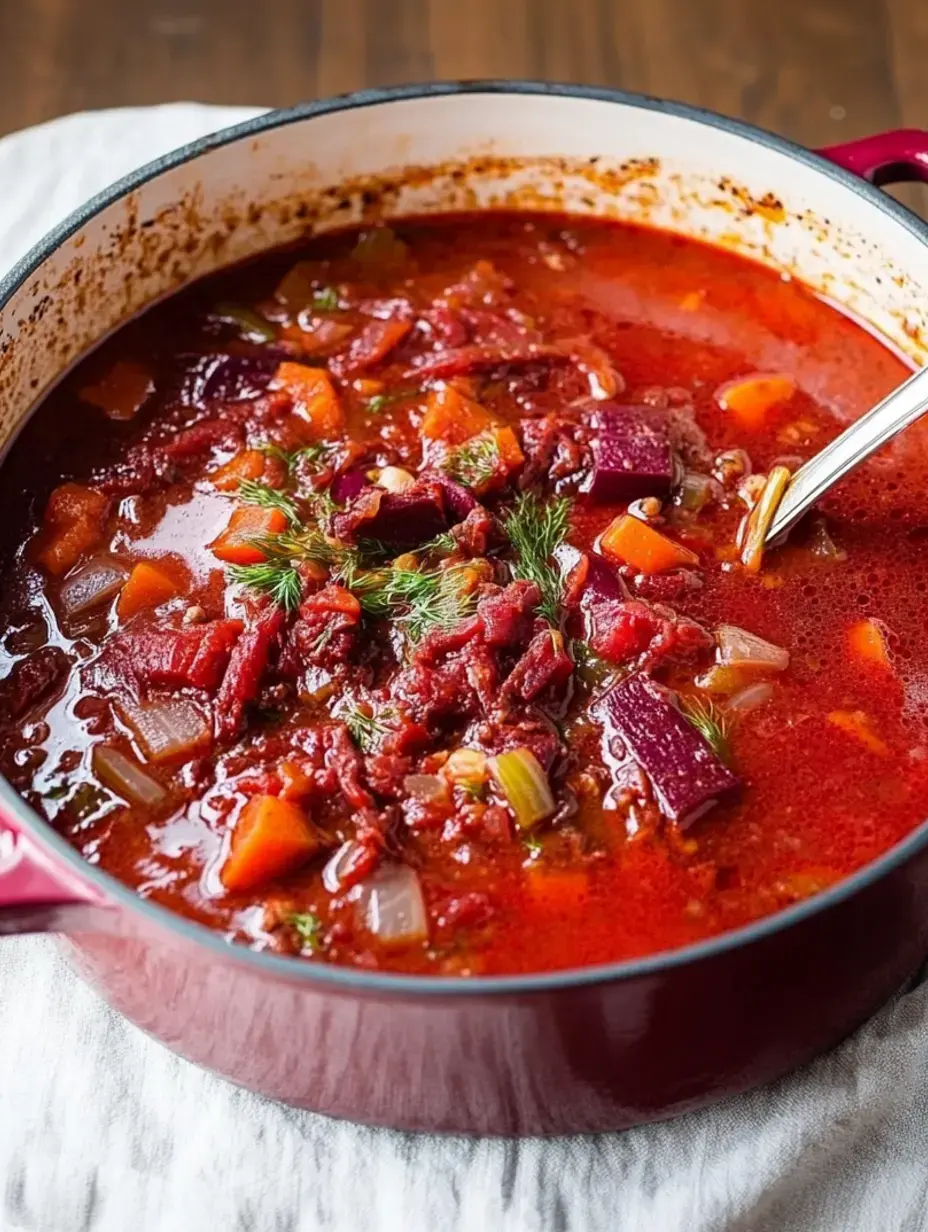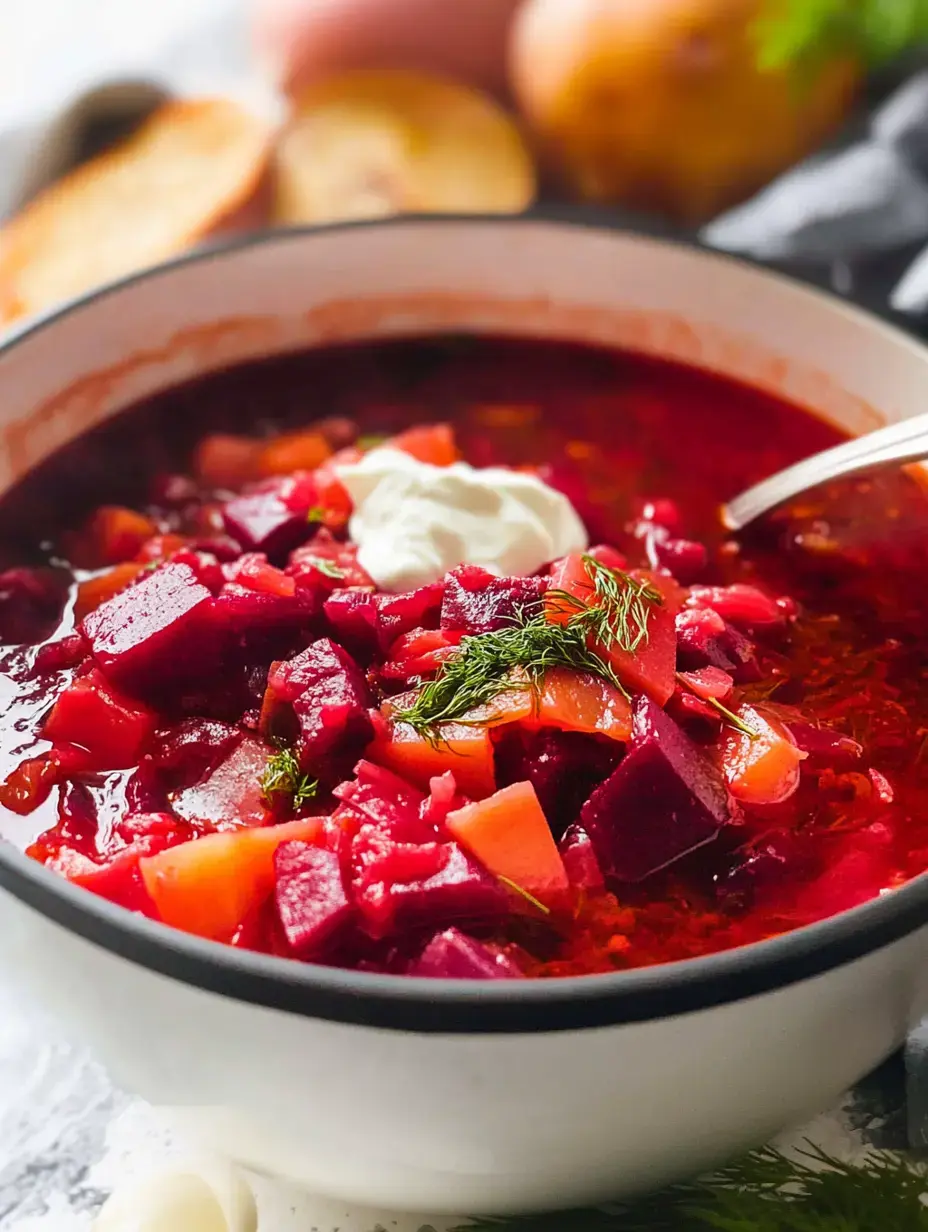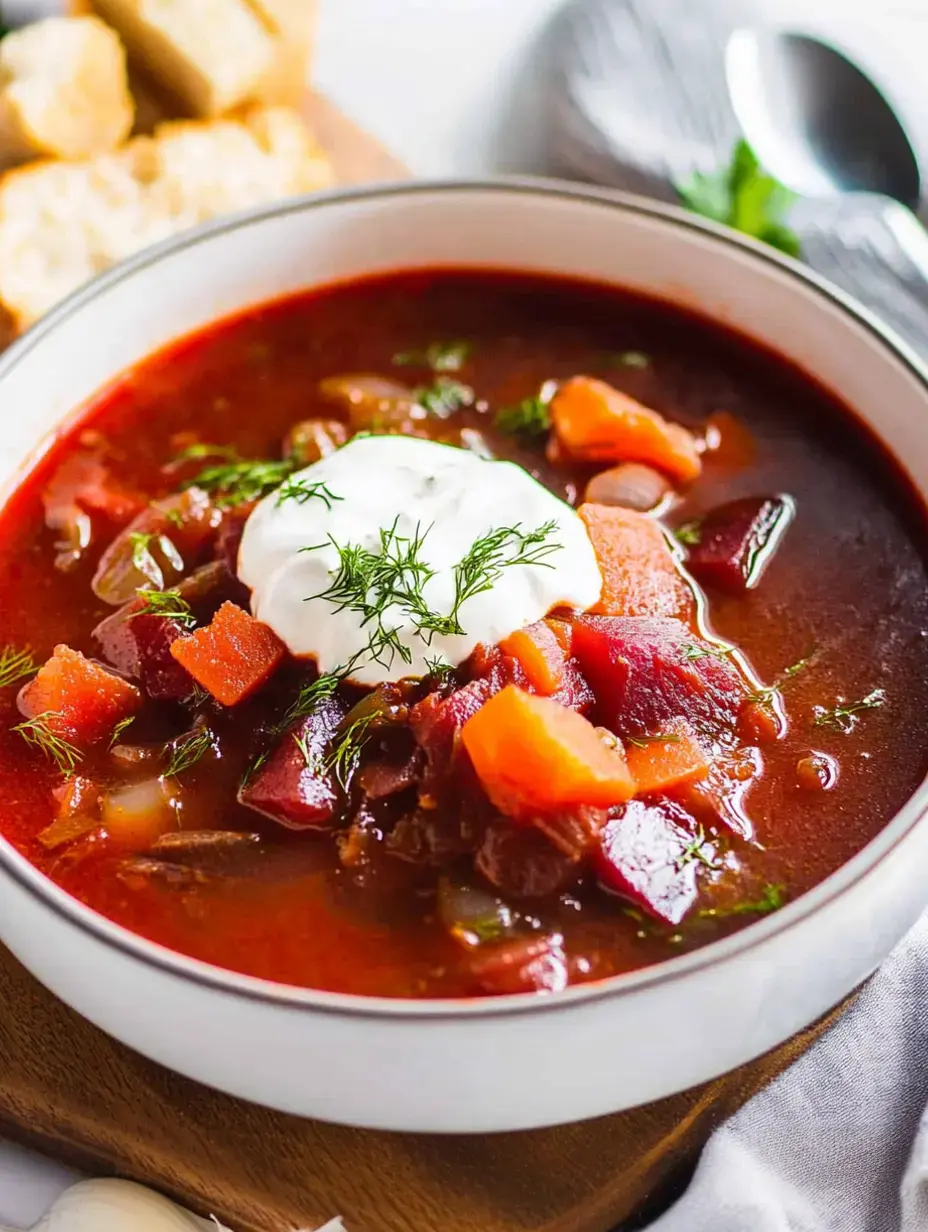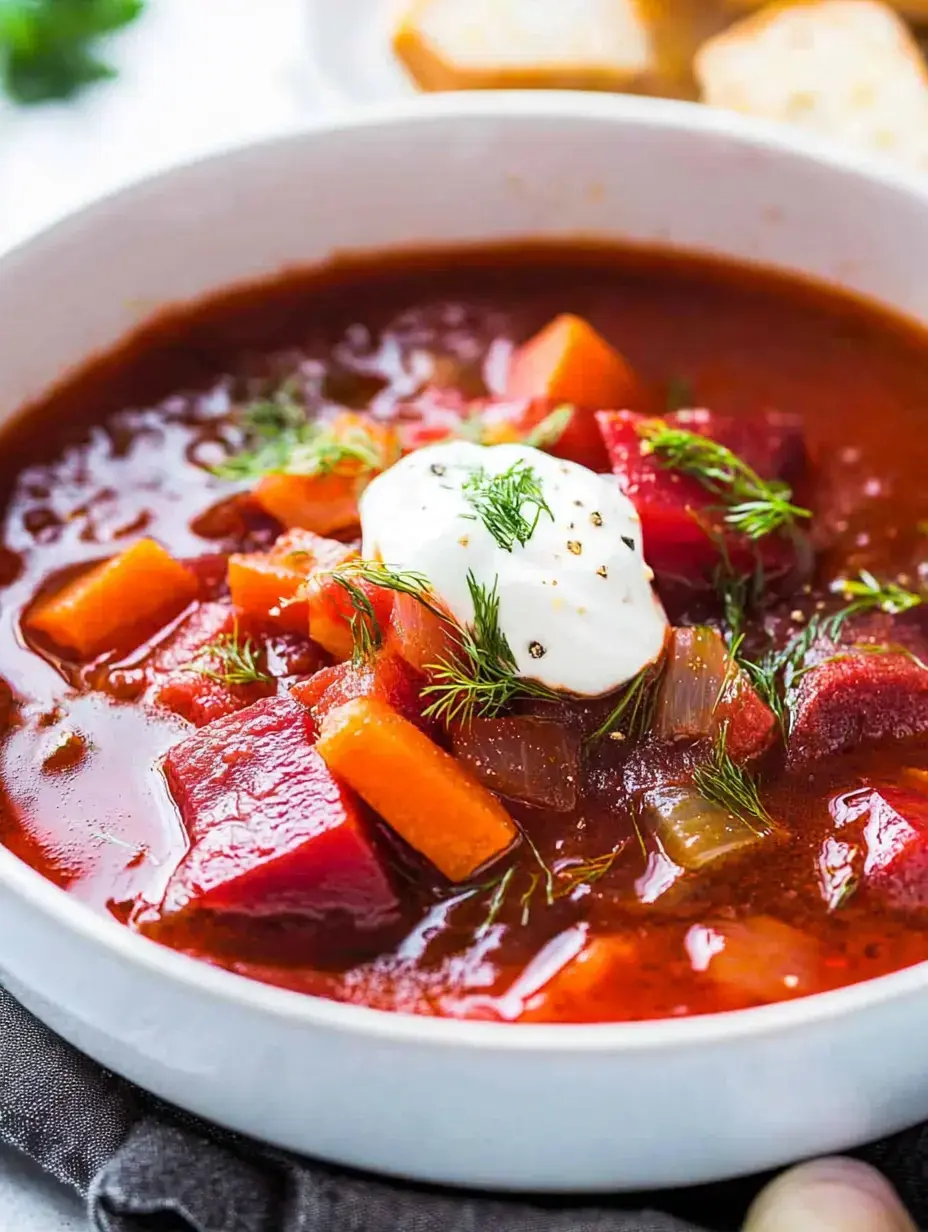 Save
Save
My grandma's cherished borscht has traveled down family lines for ages in our Ukrainian roots. Whenever I cook this bright soup, I'm whisked back to her small kitchen where I'd watch her slice beets and toss in just enough of each spice. When I smell fresh dill and garlic now, I can't help but think of those family meals at her place.
Heart of Ukrainian Dishes
Borscht isn't just any old soup, it stands as Ukrainian cooking's center. My grandma would always say your borscht tells folks plenty about how you cook. All families put their own spin on it, but some things never change – that stunning deep red from beets, soft veggies, and the thick broth that gives you that cozy feeling inside.
Picking Prime Stuff
Great borscht begins with grabbing the best stuff to put in it. I always hunt for young beets with green tops still on 'cause they're softer and sweeter. Your cabbage should feel solid and weighty for how big it is. And you want those waxy kind of potatoes since they don't fall apart while they cook.
The Method
Creating borscht feels like kitchen choreography. You kick off with the basics, letting beef bones make a thick broth. Then comes the steady chop of veggies, each one going in at its own special time. There's something magical about dropping in beets and watching your soup turn that lovely deep red color.
Beet Handling
Grandma showed me beets need gentle care, peeling them softly and cutting them all the same size. I love cutting them in thin strips so they cook the same and look pretty in your bowl. Don't toss those green tops either – they make your soup taste even better.
 Save
Save
Creating Taste Depth
Your stock sets everything up and needs loads of flavor. Whether you go with beef, chicken or keep it veggie-friendly, that deep taste matters most. I love how my whole house smells as it bubbles away, telling everyone something tasty's coming soon.
Old-World Serving
My family turns serving borscht into a little ceremony. Each bowl gets its own fluffy dollop of sour cream – grandma wouldn't dream of skipping that. We throw lots of fresh dill on top and always have dark bread nearby for soaking. These small customs really make it feel special.
Getting Flavors Right
Nailing that sweet-sour mix takes some practice. Beets and carrots bring natural sweetness that plays with the zip of vinegar. I always taste at the end and maybe add a bit of sugar or a splash more vinegar until everything clicks together just right.
Cooking Big Batches
Borscht actually tastes better after sitting awhile. I cook huge pots knowing the flavors will grow stronger overnight. It's so nice having homemade soup waiting in the fridge when you want some comfort food fast.
Storing Your Soup
One awesome thing about borscht is how long it stays good. In the fridge with a lid on, it tastes great for nearly a week. For keeping it longer, I fill containers leaving room at the top and pop them in the freezer. It's like having a bit of home waiting whenever you need it.
 Save
Save
Warming It Up
You've got to warm borscht back up carefully. I always do it slowly on the stove, not in the microwave. This keeps all the different textures nice and lets the tastes come back gently. Throw some fresh dill on top and it's just as good as when you first made it.
Green Stuff Counts
You can't skip fresh dill and garlic in my kitchen. That pop of green herbs at the end pulls everything together. I grow dill in my yard just for my borscht, and when I cut it fresh I think about grandma doing the same thing way back when.
The Right Loaf
You need good rye bread with borscht. Dark, heavy, and a bit tangy, it works so well with the soup. Sometimes I'll warm it up a bit but we usually eat it fresh just like grandma did.
Hot Weather Version
When it gets really hot out, we often enjoy our borscht cold. It's super refreshing and the flavors feel clean and bright. A spoonful of cold sour cream and extra dill makes a perfect meal for sunny days.
Healthy Too
I love that this family favorite is actually super good for you. The beets pack tons of vitamins, cabbage gives you fiber, and all those veggies make such a healthy meal. Grandma always claimed borscht fixed both body and spirit.
 Save
Save
Veggie Friendly Choice
Though old-school borscht uses meat, my vegetarian pals love how easy it is to switch up. A good veggie stock works great and throwing in some beans gives that fullness that makes it feel like a whole meal. The heart of the dish stays untouched.
Every Home's Take
It's cool how each Ukrainian family makes borscht their own way. Some throw in beans, others add mushrooms. My grandma kept hers pretty simple so the veggies could stand out. These small touches make each family's version one of a kind.
The First Steps
That first part where you cook down veggies, what we call zazharka, really matters. It's where all the flavor starts building. I enjoy watching carrots and onions turn golden and smell amazing, knowing they'll bring such richness to the final bowl.
Chopping Style
How you cut your veggies really changes things. I picked up tricks from watching grandma's careful knife work. Each veggie needs its own special cut – thin strands for cabbage, skinny sticks for beets, squares for potatoes. All this affects how the soup feels when you eat it.
Beyond Just Eating
Making borscht goes way past just cooking food. It connects us to our roots, shows love through what we eat, and keeps old family ways going. Whenever I make it, I can almost feel grandma next to me, guiding my hands and sharing her love and wisdom.
 Save
Save
Recipe FAQs
- → Is a vegetarian version possible?
- Totally! Use veggie broth instead, toss in beans for protein, and boost flavor with bouillon and olive oil.
- → How long will leftovers last?
- Keep it in your fridge for up to 5 days or freeze it for 3 months. Just heat up what you'll eat.
- → Can I add some meat?
- Sure! Simmer bones or ribs for about an hour, chop the cooked meat, and toss it back into the pot.
- → How do I make it feel authentic?
- Include sauerkraut for a classic twist, and always serve with sour cream and rye for the full effect.
- → What's the deal with vinegar and sugar?
- They balance things out. Sugar tones down the tang of tomatoes and beets, while vinegar adds a nice sharp kick.
